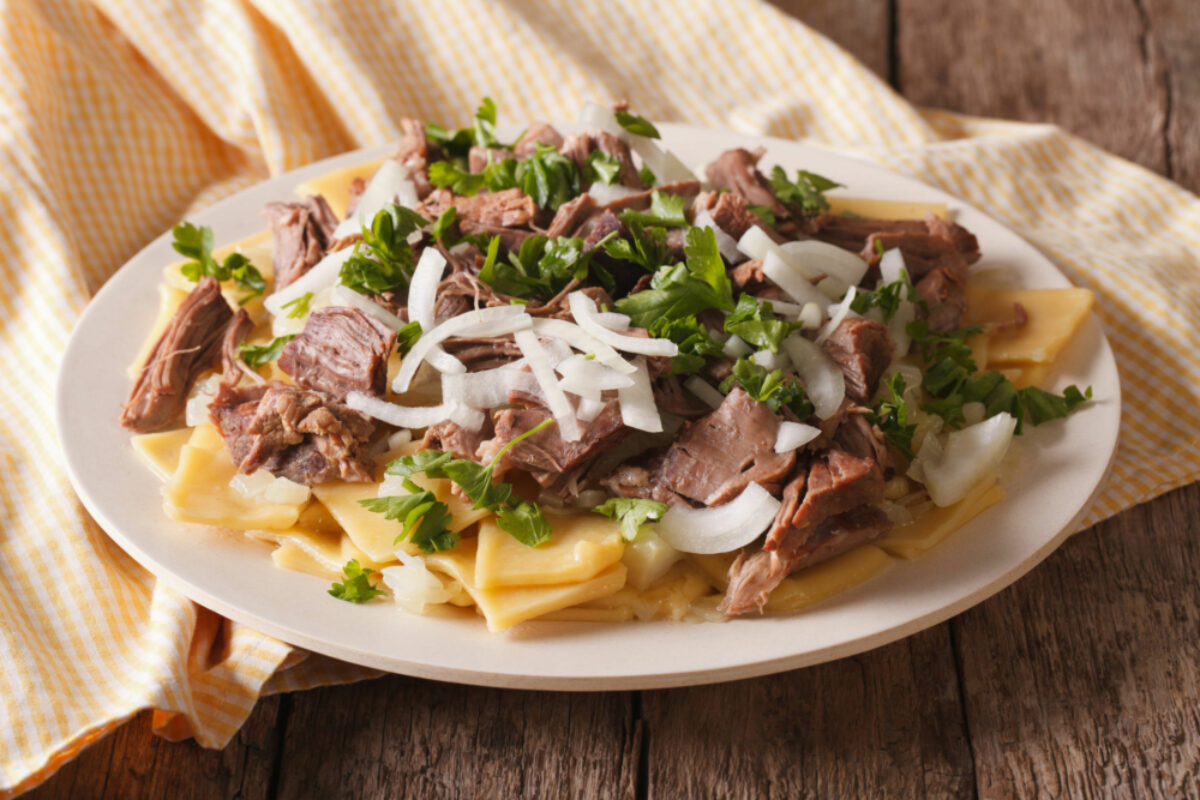What to eat in Central Asia
Dig deep for a culinary adventure
Central Asia is generally absent from the world gastronomy map. Is that justified? At first sight, yes. Restaurants around the region tend to serve the same classic staples: plov (a rice dish mixed with carrots, raisins and meat), manty (dumplings), shashlyk (grilled kebabs) and laghman (an Uyghur spaghetti in a sumptuous broth).
The real culinary adventurer, however, digs deeper. Often, bazaars are the best place to find dishes and delicacies that the average tourist might not see. In Central Asia, that means Dungan ladies selling mountains of herbs and spices that have no English name, standing shoulder to shoulder with pensioners making some extra cash from the heirloom berries and tomatoes from their cottage. It means Koreans selling dog meat. Nuts galore. And of course, an incredible array of dairy products made from cow, goat, horse and camel milk.

Don't miss the beshbarmak in Kazakhstan and Kyrgyzstan
Regional specialities
In Kazakhstan and Kyrgyzstan, beshbarmak is a mountain of meat on top of pasta lathered in onion sauce.
In Uzbekistan, try some kozhe on a hot day; a cold soup of fermented milk and barley. Also, you cannot miss the flat breads (lepyoshka) Uzbeks bake daily: they are everywhere, in great variety.
In Turkmenistan, look out for the meat pies in all shapes and sizes, while Tajikistan has qurutob: a fresh salad mixed with yoghurt.
Although horse meat is commonly eaten around the world, many regard it as a taboo food. However, horse meat sausage (kazy) is a national dish in Kazakhstan and Kyrgyzstan. If that’s likely to be a problem for you, check with your host to make sure your food is horse-free before you dig in.
What if I'm vegetarian?
Central Asia has been dubbed a vegetarian’s nightmare. For a vegan, it’s even worse. The nomadic heritage of these countries means that farming vegetables only came with the Russian invasion. Without exception, every national dish that locals pride themselves on revolves around animal products: meat, milk, cheese and cream form the base of everything.
Vegetarianism is usually understood as “only eats chicken”. Restaurant salads stick to a combination of cucumber and tomato that quickly wears thin. If you are a vegetarian, ask your tour operator what provisions can be made (Uzbekistan has the best understanding of Western culture).
High-end restaurants can cater to vegetarian needs, and big cities have Indian restaurants. As a back-up, self-cater. Once summer comes, the bazaars of Central Asia are overflowing with delicious melons, pomegranates, nuts and other fruit and vegetables. Enjoying these is no punishment.




